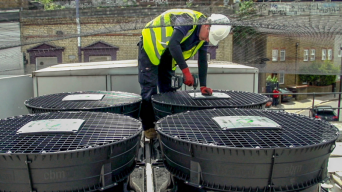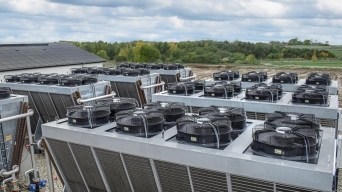Cultivating Green Hearts in The Next Generation
As recent global events and supply chain disruptions have shown, reducing our reliance on food imports in Singapore is critical to our food security. Hence, the government aims to build up our Agri-food industry's capability and capacity to produce 30 percent of our nutritional needs locally and sustainably by 2030. To reach this '30 by 30' food security goal, the government recognised the need to equip new local talents with relevant knowledge and skills.
FARMZSTORY
In tandem with this vision, Farmzstory is spearheading a movement to promote urban farming to schools, the community and beyond. Farmzstory is led by Mr Ng Ah Ban (Team Lead & Strategy Planning), and his team consists of Ms Germaine Tan (Sales & Marketing), Mr Ernest Chew (Business Partner & Finance) and Mr Ng Kok Keong (Operations). Incidentally, Mr Ng and his team were among the first batch of graduates of the 'Digital AgriTech Operation Manager' program held by NTUC Learning Hub.
In the span of less than a year, the team at Farmzstory completed the set-up of 18 greenhouses across 13 primary schools, secondary schools and junior colleges. Concurrently, the Farmzstory team looks out for new technology that could further optimise their farming activities. To test their theories, the team sets up a model greenhouse located in Lim Chu Kang.
REFINING THE TECHNOLOGY
A greenhouse is 2.5 metres wide, 6 metres long, and 2.3 metres tall. A mixture of crops, such as Chinese broccoli (kai lan), choy sum (cai xin), milk cabbage (nai bai) and ipomoea aquatica (kang kong) can be grown in these greenhouses. However, growing conditions in greenhouses were not optimal, especially given the warm climate in Singapore. This triggered the idea to improve the ventilation system within these greenhouses.
Through a collaboration with leading supplier of ventilation and drive technology ebm‑papst SEA Pte. Ltd., two electronically commutated (EC) axial fans were installed in the model greenhouse. These fans help to remove the stale and hot air from the interior and bring in fresh, cooler air from the exterior. The gentle air draft generated by the fans create air change at the tip of the leaves to encourage photosynthesis and thus healthy growth of the crops. In addition, the cooler air will also improve the comfort levels of the people who are hard at work with the crops.
Unlike conventional alternating current (AC) fans, these EC axial fans are also equipped with infinite variable speed control. This enables fan speed to be changed in accordance with the needs of the plants and farmers. In the day, fan speed will be higher as the plants are more active. At night, fan speed will be lower to allow for minimal fresh air change and to conserve energy.
The Farmzstory team installed a standalone solar PV system to power these fans, making it friendlier to the environment. As the EC axial fans are energy- efficient than their AC counterparts, it enables easy integration with the solar panels. With this set-up, the team are several steps closer to net-zero emissions.
In recent months, the team has been exploring Internet-of-Things (IoT) technology for their greenhouses. By using sensors, critical parameters such as the nutrient and moisture level of the medium and temperature and humidity levels inside the mini greenhouse can be measured and tracked. ebm‑papst EC axial fans can also be controlled through such sensors. For example, when the temperature in the greenhouse increases, the fan speed will also increase in order to cool the greenhouse more quickly.
Through further refinement of the above technologies, the team hopes to develop more conducive growing conditions for other types of crops.


